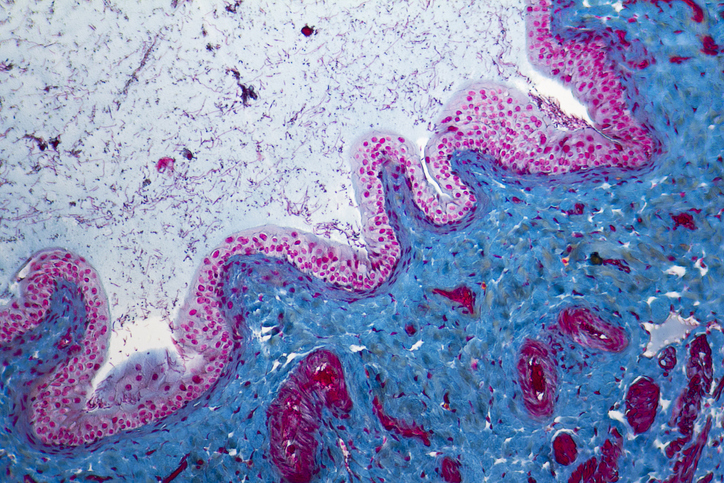
A recent retrospective study published in PLOS ONE evaluated the reasons why rheumatoid arthritis (RA) patients aged ≥ 65 years choose to discontinue seven biological disease-modifying antirheumatic drugs (bDMARDs).
“Recently, cohort-based observational studies have increasingly been used to investigate the performance of bDMARDs, and drug retention is considered as an index of safety, effectiveness, and tolerability. Treatment selection and discontinuation may be influenced by factors such as differences among attending physicians and patient characteristics, although the national health insurance in our country and multicenter studies may help to decrease these possible bias (bDMARDs can be freely selected by attending physicians’ discretion in our country),” the researchers wrote. “And as far as we know, there are no reports comparing the effectiveness and safety of seven bDMARDs in elderly RA patients.”
The researchers used the Kansai Consortium for Well-being of Rheumatic Disease Patients (ANSWER) cohort to gather data on RA patients from seven institutes in Japan: Kyoto University, Osaka University, Osaka Medical College, Kansai Medical University, Kobe University, Nara Medial University, and Osaka Red Cross Hospital. Data were included for 661 patients (1,098 bDMARDs treatment courses) registered between 2009 and 2018. Mean age at baseline was 71.7 years, and most patients (80.7%) were female. Mean duration of disease was 10.5 years. The following courses of treatment were evaluated: abatacept (ABT, n = 272), tocilizumab (TCZ, n = 234), etanercept (ETN, n = 184), golimumab (GLM, n = 159), infliximab (IFX, n = 101), adalimumab (ADA, n = 97), and certolizumab pegol (CZP, n = 51).
In the total cohort, anti-cyclic citrullinated peptide antibody positivity was 85.5%, mean Disease Activity Score in 28 joints using erythrocyte sedimentation rate score was 4.6, clinical disease activity index was 17.3, and mean Health Assessment Questionnaire disability index score was 1.3. Mean doses of concomitant medications were: methotrexate, 4.4 mg/week (56.4%) and prednisolone, 2.8 mg/day (45.6%).
Lack of Effectiveness Common Reason to Cease Treatment
At 36 months, just over half (51.2%) of treatment courses were discontinued: lack of effectiveness, 25.1%; toxic adverse events, 11.8%; non-toxic reasons, 9.7%; and remission, 4.6%. Retention rates due to lack of effectiveness were: ABT (81.6%), TCZ (78.0%), GLM (76.5%), IFX (68.0%), ADA (67.3%), CZP (60.9%), and ETN (55.4%) (Cox P<0.001); retention rates attributed to toxic events were: ABT (95.4%), CZP (92.9%), ETN (89.5%), ADA (86.3%), TCZ (86.3%), GLM (85.0%), and IFX (79.3%) (Cox P = 0.043); and retention rates due to remission were: CZP (100.0%), GLM (97.7%), ADA (97.5%), ABT (96.8%), IFX (94.8%), ETN (94.4%), and TCZ (94.2%) (Cox P = 0.58).
“In terms of HRs [hazard ratios] for discontinuation due to all toxic adverse events, ADA (HR = 3.16, P = 0.0076), ETN (HR = 2.50, P = 0.0020), GLM (HR = 3.58, P = 0.0014), IFX (HR = 3.62, P = 0.0023), and TCZ (HR = 3.04, P = 0.0032) showed a significantly higher rate compared with ABT, and the difference was significant between the seven bDMARDs (P = 0.043),” the study authors wrote. “On the other hand, no significant differences were observed in HRs for discontinuation due to non-toxic reasons (P = 0.62) or remission (P = 0.58).”
The researchers concluded, “ABT showed lowest discontinuation rate by lack of effectiveness and by toxic adverse events, which lead to highest overall retention rates (excluding non-toxic reasons and remission) among seven bDMARDs in adjusted model of elderly RA patients.”







 © 2025 Mashup Media, LLC, a Formedics Property. All Rights Reserved.
© 2025 Mashup Media, LLC, a Formedics Property. All Rights Reserved.